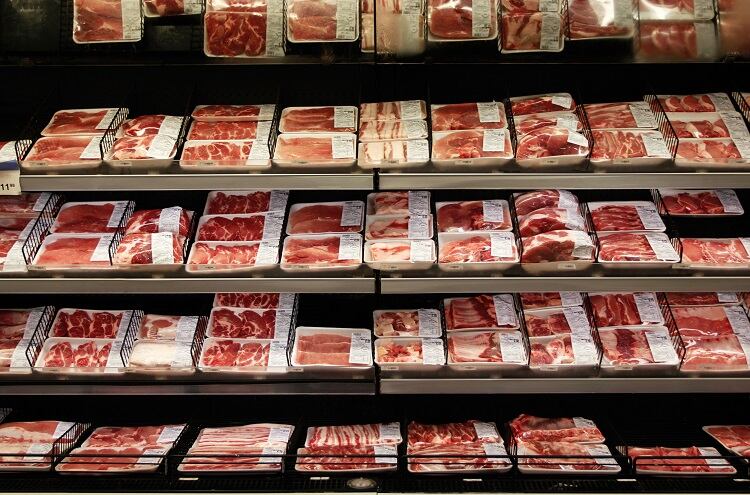Cultivated meat has serious potential to feed growing populations with high quality protein, disrupt the conventional meat sector, and in so doing, reduce global greenhouse emissions associated with animal agriculture.
However, at least three key barriers are hindering its progress: regulation, cost, and scale.
With the first-ever cell-based meat product – a cultivated chicken ingredient produced by Just Eat – having recently received regulatory approval in Singapore, focus has shifted towards the latter two hurdles.
“Scaling up and reducing production costs are the two biggest challenges for cultivated meats to be a success,” according to Antoine Davydoff, co-founder and CSO of France’s first cultivated meat start-up Gourmey. And that means being available on a global scale and at price parity with conventional meat, he continued, “so that the average consumer can afford it”. This, Gourmey pinpoints as ‘the biggest bottleneck of the industry’.
So is there something that can be learnt here from pharma? How can existing technologies be leveraged to accelerate the scale-up of cultured meat production and reduce its associated costs?
Inspired by vaccine production
The first cultured burger – made by Dr Mark Post of Maastricht University in 2013 – famously cost $280,000 to produce. Dr Post used cell factories, which can grow just 3-5g of cells each, to make the burger.
“It’s all very labour intensive, [the cell factories] take up a lot of space, they are expensive, and they generate a lot of waste because you can’t reuse them,” explained Gourmey’s Davydoff at last week’s Industrializing Cell-Based Meats & Seafood event.
“So the system is not very scalable and you won’t be able to feed the world with it.”
Considering that a cultivated meat ingredient is currently being sold in foodservice for a reported $23 per dish, the industry has already come a long way. But Gourmey’s founders believe more progress can be made, Davydoff told delegates, by leveraging pharmaceutical expertise and scaffold-free production.

While muscle tissues have yet to be produced at a global scale, the same cannot be said of animal cells. These are routinely cultured at scale by the pharmaceutical industry, namely for antibody and vaccine production.
What is particularly interesting to Gourmey, whose flagship product is a ‘slaughter-free’ cultivated foie gras, is that the pharmaceutical industry has decades-long experience making vaccines from duck cell lines.
Indeed, the first vaccine developed for human use was made from duck embryonic cells.
‘Highly scalable’ embryonic duck cells
Today, pharma companies made some vaccines from embryonic stem cells isolated from fresh, fertilised eggs. These cells are totipotent, which the CSO explained means they can differentiate into other cell types for ‘any type of meat’.
But most importantly, he stressed, they are ‘highly scalable’. “They can be grown in full suspension culture without the need for microcarriers…which greatly simplifies the production process and minimises cost.”
Further, these embryonic stem cells are ‘immortal’, which allows for a fully continuous process, without having to regularly return to the animal for more cells, not requiring a new vial of cells between each batch.

When grown in bioreactors, these cells grow to ‘huge densities’. For a comparison, a cell factory system is capable of growing up to around one million cells per millilitre of medium used. Avian embryonic stem cells, on the other hand, can be grown to significantly greater quantities per ml of medium in profusion culture, with a faster growth doubling time.
Scaffold-free production
Unlike vaccine and antibody makers, who are growing cells for their by-products of proteins and viruses, cultivated meat companies are growing cells for, well, the cells themselves.
Gourmey has established its own line of cells from duck and chicken eggs, and has decided to build its cultured poultry products without the use of scaffolding. This, the CSO explained, helps bring down the cost.

Currently, a good number of cultivated meat producers rely on the 3D structure, to which muscle cells attach and form a ‘mature tissue’ with the ‘right texture’.
Scaffolding requires a new bioreactor and process design, explained the Davydoff, as well as additional inputs and steps to the process, which in turn, increases the cost of goods.
Gourmey has developed its own technology to differentiate the most food-relevant cell types ‘without any sort of scaffolding’. “This allows us to be scaffold-free from the beginning to end of our process.”
The start-up undertakes this ‘food design’ after the cell harvest, to bring texture to what would otherwise be – in the absence of scaffolding – a ‘kind of unstructured paste’.

This technique, together with existing technologies used within pharma, makes for a ‘very promising strategy’, the CSO told delegates, “if we want to make cultured meat a reality for people as fast as possible, and provide a long-term solution to bring delicious and sustainable meat to the world”.




